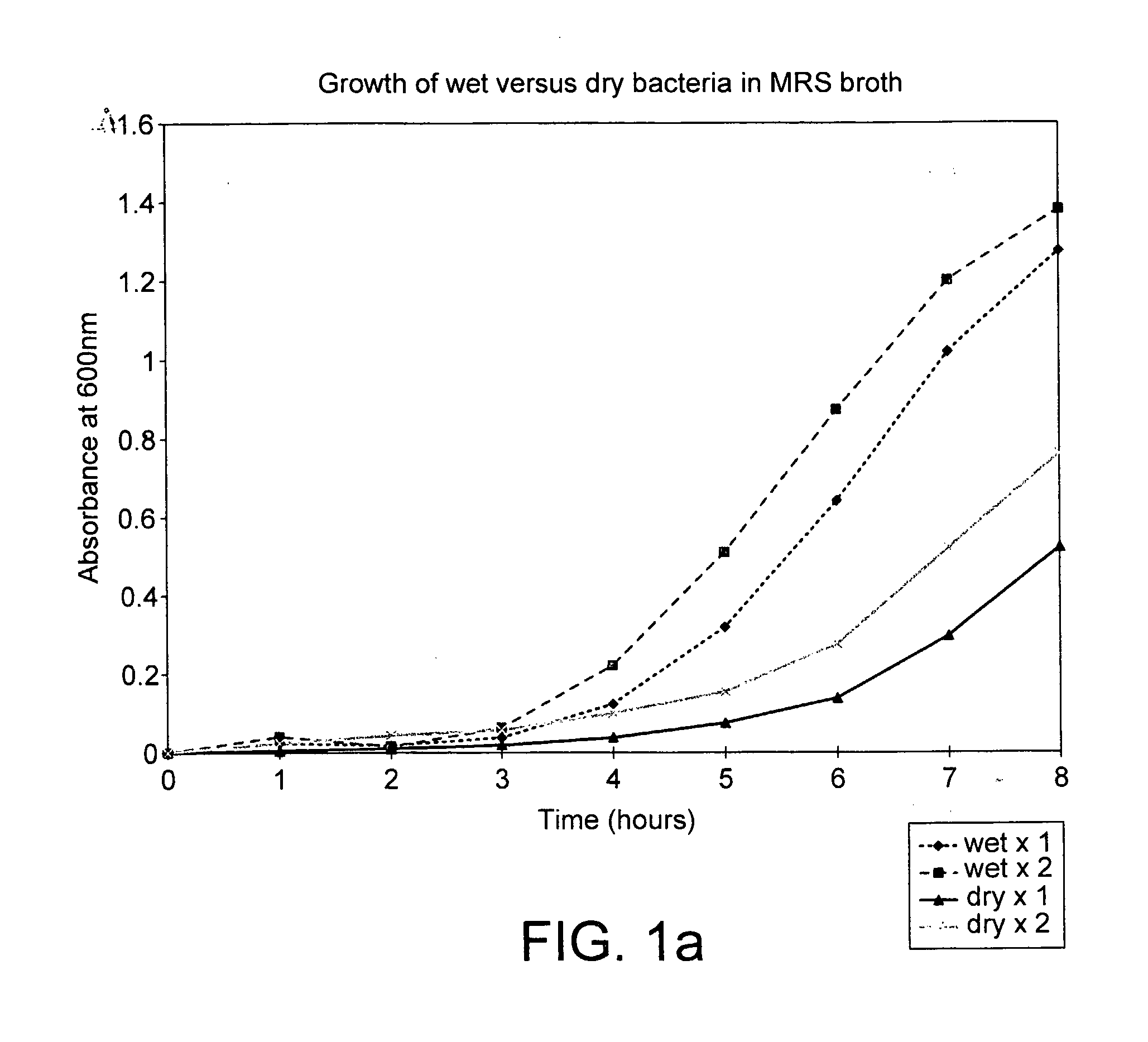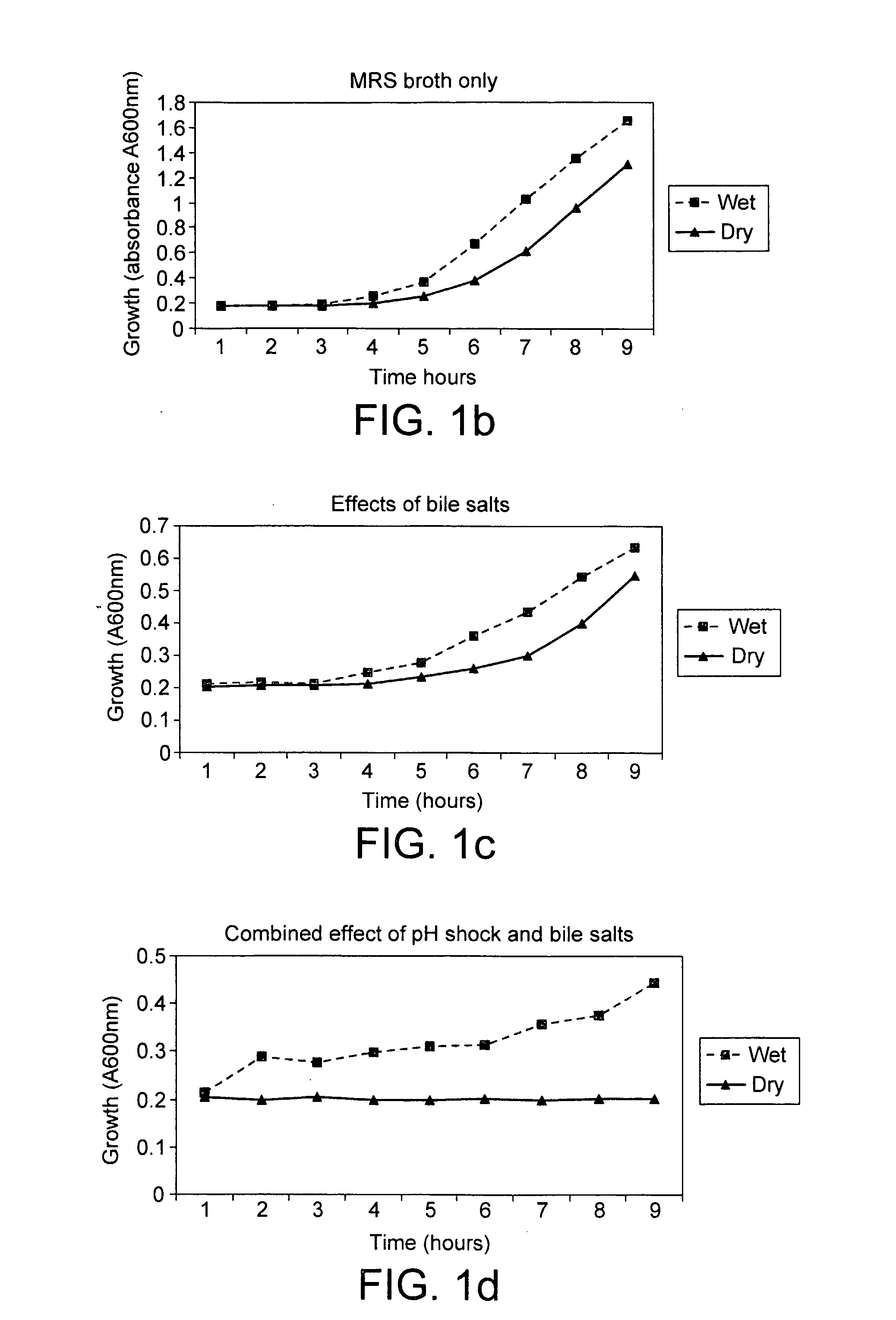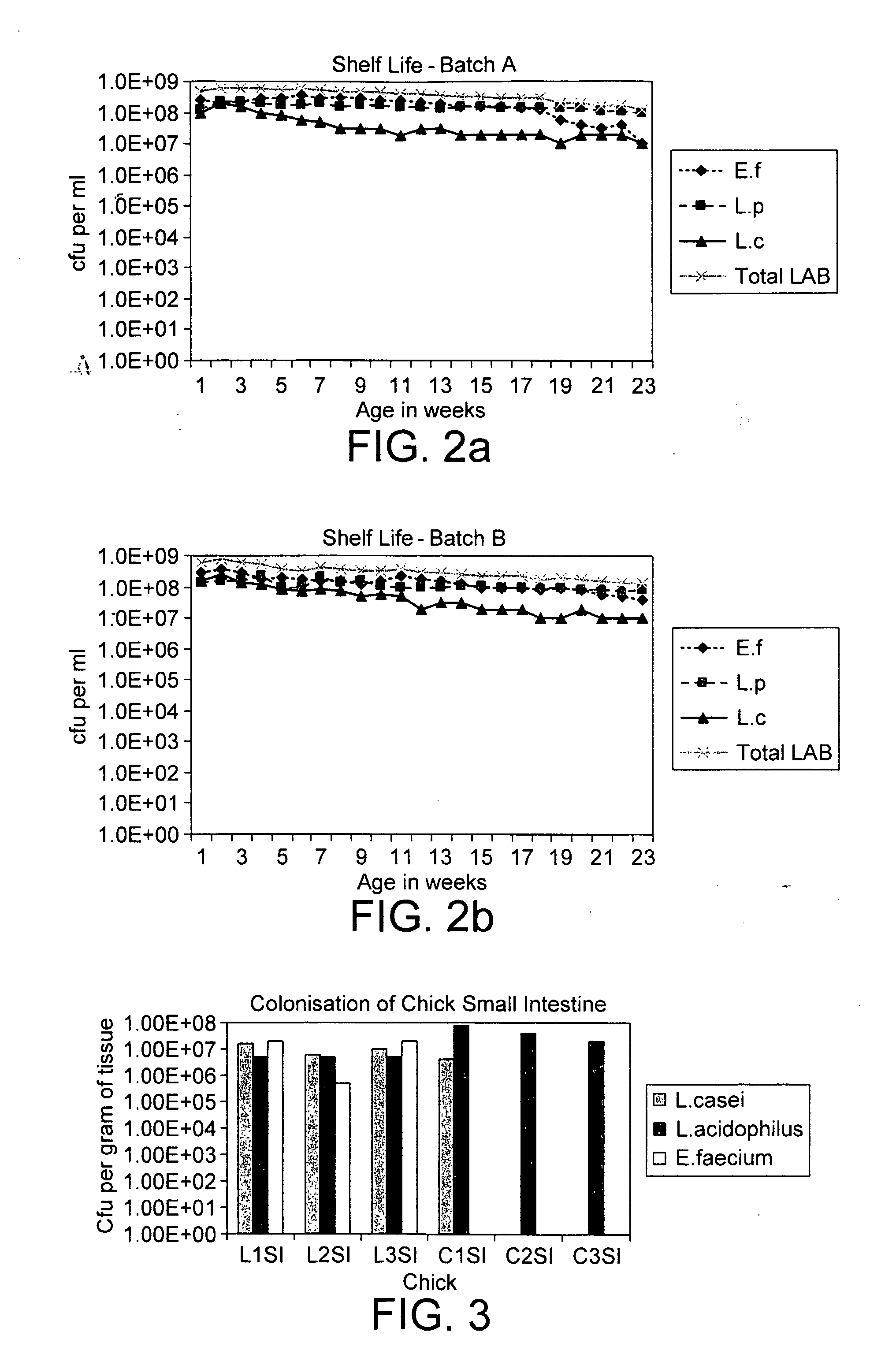Metabolically active micro organisms and methods for their production
a technology microorganisms, which is applied in the field of metabolically active bacteria preparation, can solve the problems of short shelf life of probiotic dairy products, low metabolic activity of freeze-dried bacteria, and typical loss of resilience of freeze-dried products
- Summary
- Abstract
- Description
- Claims
- Application Information
AI Technical Summary
Benefits of technology
Problems solved by technology
Method used
Image
Examples
example 1
Production of a Growth Substrate, using a Barley-Based Medium
[0080](A) Germination (Malting)
[0081]Day 1
[0082]Barley was steeped in water for 2 to 24 hours, depending on the batch of grain. 0.1% (w / v) sodium hypochlorite (bleach) can be included in the water to inhibit growth of contaminants during the germination phase. After 4 hours, the water was drained from the grains and the grains left to stand at room temperature from 10 to 30 ° C. for approximately 1 day.
[0083]Day 2
[0084]The grains were steeped in clean water for another 4-hour period. Hydrogen peroxide (0.1% w / v) may be added to the water for this and subsequent soaks. Hydrogen peroxide providse oxygen for the germinating grains, and act as a disinfectant. Alternatively, sodium hypochlorite may be used. After 4 hours, water was drained from the grains and the grains left to stand for approximately 1 day. Occasional (e.g. every 4 hours) agitation of the grains may improve germination by increasing gaseous exchange, providin...
example 2
Analysis of the Growth Substrate
[0093](a) Carbohydrate Analyses:
[0094]Total carbohydrate content was determined using the phenol-sulphuric acid assay, with glucose as reference standard. (Dubois, M., Gilles, K. A., Hamilton, J. K., Rebers, P. A. and Smith, F. (1956) Analytical Chemistry, vol. 28., p. 350).
[0095]Reducing sugars were determined using the Nelson-Somogyi method, again with glucose as the reference standard. (Somogyi, M. (1952) Journal of Biological Chemistry., vol. 195., p. 19).
[0096]Results:
[0097]Total sugars in substrate are in the range 20 to 40 mg / ml (milligrams per millilitre)
[0098]Reducing sugars are in the range 5 to 20 mg / ml.
[0099](b) Protein and Peptide Analyses:
[0100]Total protein was determined using two assays, with bovine serum albumin as reference standard:
[0101](i) The Biuret Reagent (Itzhaki, R. F & Gill, D. M. (1964) Analytical Biochemistry, Vol. 9., p. 401-410.
[0102](ii) The Lowry Method, as modified by Ohnishi and Barr. (Ohnishi, S. T. & Barr, J. K. (...
example 3
Production of a Metabolically Active Bacterial Culture
[0107](A) Fermentation
[0108]The growth substrate prepared according to example 1 was cooled to 37° C. and the bacterial cultures added. Examples of a suitable inoculum are freeze-dried bacteria or liquid starter cultures (typically 1% (v / v) of an overnight culture in nutrient broth).
[0109]In this example the following bacteria were grown in two vessels:
[0110](i) Enterococcus faecium, Lactobacillus plantarum;
[0111](ii) Lactobacillus casei
[0112]Fermentation was carried out for 16-20 hours, until the pH reached 4.5±0.3 units. The fermentation mixture was then cooled to 4° C. and subjected standard techniques to assess quality (to determine microbiological purity and enumeration of bacteria).
[0113]At this point, sterile potassium sorbate (0.005% w / v final concentration) may be added to the fermented broth. This acts to inhibit the growth of any fungi or yeast that may arise due to contamination during handling by the end-user.
[0114...
PUM
| Property | Measurement | Unit |
|---|---|---|
| temperature | aaaaa | aaaaa |
| temperature | aaaaa | aaaaa |
| concentration | aaaaa | aaaaa |
Abstract
Description
Claims
Application Information
 Login to View More
Login to View More - R&D
- Intellectual Property
- Life Sciences
- Materials
- Tech Scout
- Unparalleled Data Quality
- Higher Quality Content
- 60% Fewer Hallucinations
Browse by: Latest US Patents, China's latest patents, Technical Efficacy Thesaurus, Application Domain, Technology Topic, Popular Technical Reports.
© 2025 PatSnap. All rights reserved.Legal|Privacy policy|Modern Slavery Act Transparency Statement|Sitemap|About US| Contact US: help@patsnap.com



